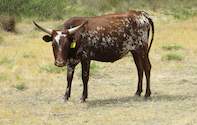
A meeting to discuss the location of foot and mouth control zones will be held in Pretoria on April 7, 2005. All provincial and national departments of animal health will attend this meeting, which will review the location and activities undertaken in all the zones.
Foot and mouth disease is currently kept in check with the use of different zones, between which restrictions are placed on animal movements. These zones are the infected zone (previously referred to as being "behind the red line"), buffer zone, surveillance zone and the free zone, where no foot and mouth occurs.
According to Dr Edwin Dyason, deputy director for animal health in Limpopo, the review has not come about as a result of the recent foot and mouth outbreak experi- enced in the province. Rather it is because the Office International des Epizooties (OIE), the international body designated by the World Trade Organisation to check on animal health issues relating to the trade in live animals and animal products, has changed the foot and mouth zone definitions.
Dr Dyason said, "We need to adapt to these changes. They require a mind shift." He said the department would then go on to inform the affected farmers about the alterations, which will change the current control policy. Dr Dyason added that the foot and mouth zones have previously been reviewed every few years, but that control is required over a very large area. This has been reduced over the years, as the last major outbreak of foot and mouth occurred in 1983. He said that better vaccines have helped combat the disease.
This is not the first time that changes in OIE regulations have resulted in changes to the control zones. Dr Dyason said that a conference would be held later in the year to debate various aspects of foot and mouth disease in the Limpopo Province. "It is a complex issue". He said that the elephant populations that are moving out of protected areas are putting pressure on fences, and that this problem needed to be addressed.
Fence breakages by elephants allow foot and mouth carriers to move out and mingle with cattle, spreading the disease. Foot and mouth is a highly contagious viral disease that affects cloven-hoofed animals like cows and pigs, as well as wild animals. It is easily spread through droplets containing the virus, and infected animals may die when it damages their heart muscles. Animals that survive the disease usually lose weight and produce less milk. It is called foot and mouth after the characteristic blisters that appear on infected animals' feet and mouth.

